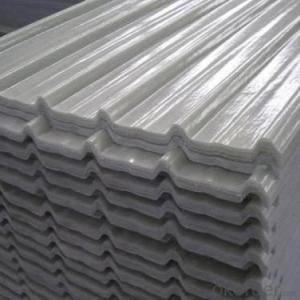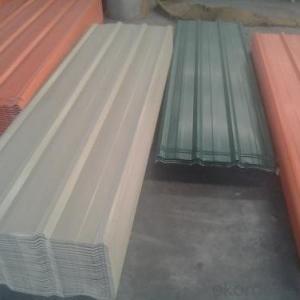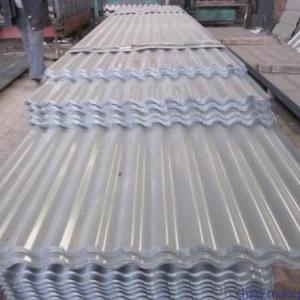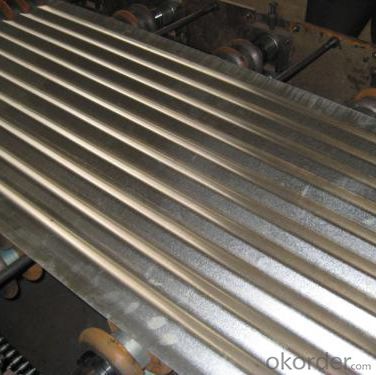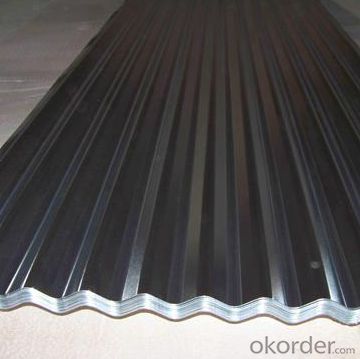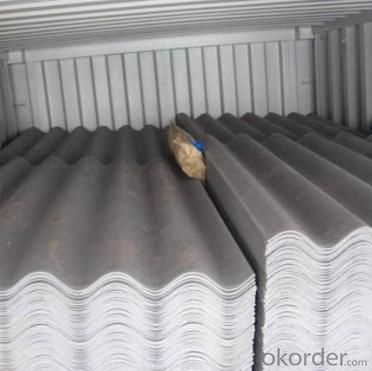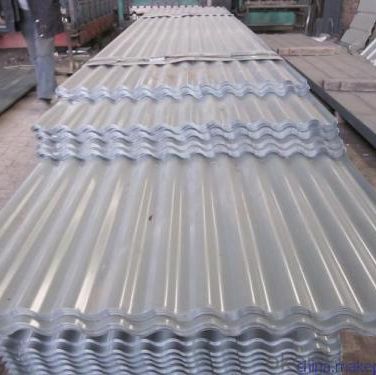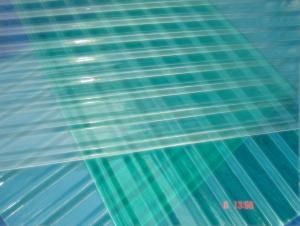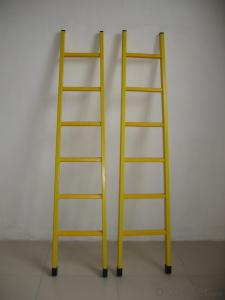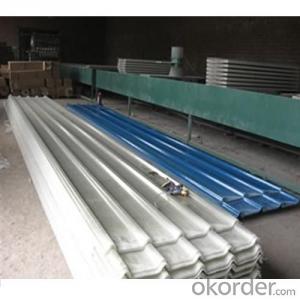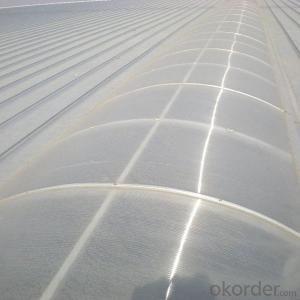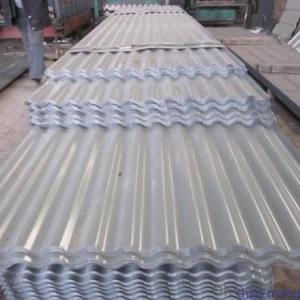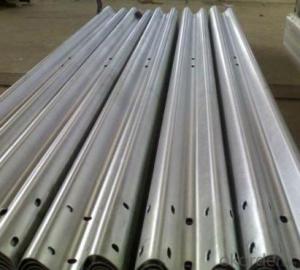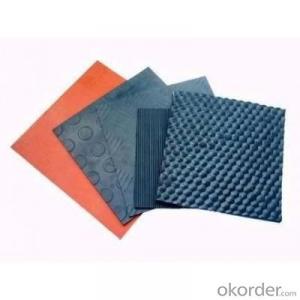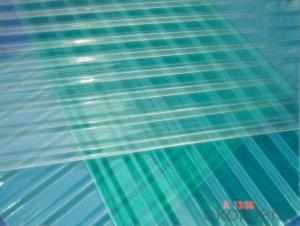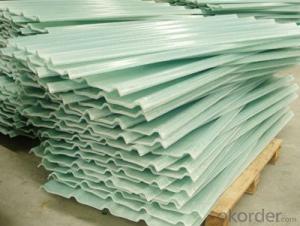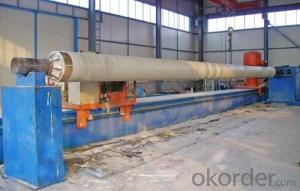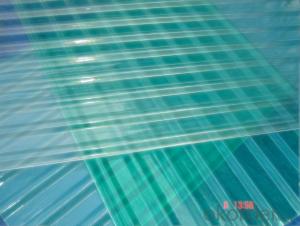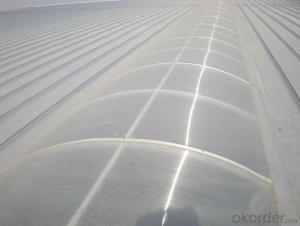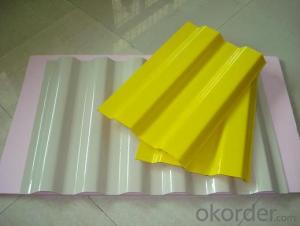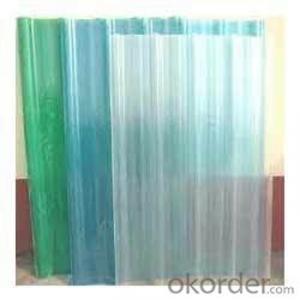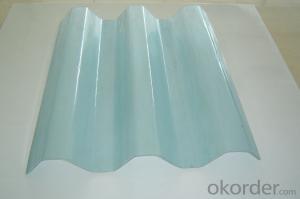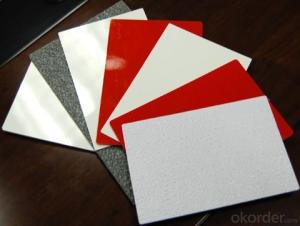Fiberglass Reinforced Plastic FRP Flat Roofing Sheet
- Loading Port:
- Tianjin
- Payment Terms:
- TT OR LC
- Min Order Qty:
- 200 m
- Supply Capability:
- 30000 m/month
OKorder Service Pledge
OKorder Financial Service
You Might Also Like
Specification
PRODUCT DESCRIPTION
FRP GRP Fiberglass Glassfiber Corrugated Roofing is a patent of our company, not like other FRP products, it is produced without yarn, instead, we use mat only. Therefore, the corrugated sheet is more strong in both horizontal and vertical direction.
Fiberglass corrugated sheet is usually used in construction site as protecting facility. It is dagarous for workers in building site since you never know if there is something hard drop down from the high area. So corrugated sheet is installed for preventing the stuff dropping down to hurt people.
FEATURES
a. anti-corrosion, non-rusty
b. lightweight and high strength
c. anti-flammable
d. anti-fatigue
e. anti-slippery and safety
f. anti-ageing
g. easy to installation and maintenance
h. excellent electromagnetism property
SPECIFICATIONS
Thickness | Mesh size | Panel size | Open area | Weight |
(MM) | (MM) | (MM) | % | (kg/m2) |
25 | 38*38 | 1220*3660 | 68 | 12.5 |
1220*4076 | ||||
1220*4000 | ||||
30 | 38*38 | 1220*3660 | 68 | 14.75 |
1220*4000 | ||||
38 | 38*38 | 1007*4047 | 68 | 19.5 |
1220*3660 | ||||
1220*4000 | ||||
50.7 | 50.7*50.7 | 1220*3660 | 71 | 23.5 |
1220*4000 | ||||
30 | 19*19 | 1007*4007 | 40 | 18.1 |
38 | 19*19 | 1007*4007 | 40 | 23.5 |
PICTURES


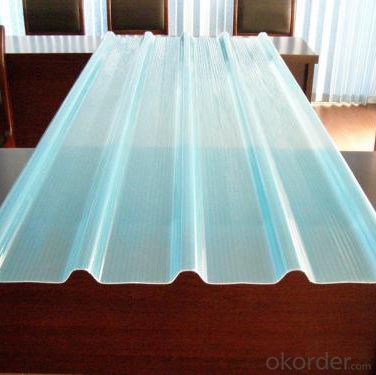
- Q: Can FRP roofing panels be used for zoos?
- Zoos can utilize FRP roofing panels due to their durability, strength, and resistance to environmental elements. These panels are suitable for various applications, including zoos, where animal safety is paramount. When it comes to zoos, the use of FRP roofing panels brings several advantages. Firstly, they are lightweight yet robust, ensuring a secure and dependable roofing solution, especially in areas prone to heavy snow loads or strong winds. Secondly, FRP panels possess exceptional resistance against UV radiation, preventing fading, discoloration, or degradation caused by prolonged sun exposure. This is vital for maintaining the zoo's aesthetics and ensuring visually pleasing enclosures for the animals. Furthermore, FRP roofing panels exhibit low thermal conductivity, which aids in regulating the temperature within the enclosures. This contributes to a more comfortable and controlled environment for the animals. Additionally, these panels provide excellent insulation, resulting in energy efficiency and reduced heating or cooling costs. Moreover, FRP roofing panels offer a wide range of colors, textures, and designs, enabling zoo designers to create visually appealing enclosures that mimic natural habitats. This enhances the overall experience for visitors while providing a more stimulating and enriching environment for the animals. In conclusion, FRP roofing panels serve as a versatile and reliable roofing solution for zoos. Their durability, resistance to environmental factors, and aesthetic options make them a suitable choice for creating safe and visually appealing enclosures for animals.
- Q: Can FRP roofing panels be used for modular office buildings or construction sites?
- Yes, FRP (Fiberglass Reinforced Plastic) roofing panels can be used for modular office buildings or construction sites. FRP panels are highly durable, lightweight, and resistant to corrosion, making them suitable for various applications. They offer excellent performance in terms of weather resistance, insulation, and fire resistance, making them a reliable choice for roofing in modular office buildings or construction sites. Additionally, FRP panels are easy to install and maintain, making them a practical option for such projects.
- Q: Can FRP roofing panels be used for food processing facilities?
- Yes, FRP (Fiberglass Reinforced Plastic) roofing panels can be used for food processing facilities. FRP panels are resistant to corrosion, moisture, and chemicals, making them suitable for a hygienic environment. Additionally, they are easy to clean and maintain, ensuring food safety standards are met.
- Q: Can FRP roofing panels be used for storage facilities?
- Yes, FRP (Fiberglass Reinforced Plastic) roofing panels can be used for storage facilities. FRP roofing panels are known for their durability, strength, and resistance to various weather conditions, making them ideal for protecting goods and materials stored in a storage facility. They provide excellent water resistance, preventing leaks and water damage to the stored items. Additionally, FRP roofing panels are lightweight, making them easy to install and maintain. They also have a long lifespan, reducing the need for frequent replacements. Overall, FRP roofing panels are a cost-effective and reliable option for storage facilities.
- Q: Do FRP roofing panels meet building codes and regulations?
- Indeed, building codes and regulations are indeed met by FRP (Fiberglass Reinforced Plastic) roofing panels. These panels, extensively utilized in the construction field, have undergone meticulous testing and certification to satisfy the precise standards and requirements stipulated by building codes and regulations. Renowned for their robustness, sturdiness, and ability to withstand diverse environmental factors, these panels are apt for usage in commercial, industrial, and residential settings. Nonetheless, it is crucial to acknowledge the potential discrepancies in building codes and regulations across regions, hence it is always advisable to seek guidance from local authorities and secure the essential permits and approvals prior to the installation of FRP roofing panels.
- Q: Can FRP roofing panels be used in areas with heavy snowfall?
- Yes, FRP (Fiberglass Reinforced Plastic) roofing panels can be used in areas with heavy snowfall. These panels are known for their durability and strength, making them suitable for withstanding heavy snow loads. However, it is important to ensure that the panels are installed and supported properly to handle the weight of the snow. Additionally, periodic maintenance and clearing of the panels may be required to prevent excessive snow accumulation.
- Q: Can FRP roofing panels be used in cold climates?
- Yes, FRP roofing panels can be used in cold climates. FRP (Fiberglass Reinforced Plastic) panels are known for their durability and resistance to extreme weather conditions, including cold temperatures. They can withstand freezing temperatures and provide effective insulation, making them suitable for use in cold climates.
- Q: Can FRP roofing panels be used for residential garages?
- Yes, FRP (Fiberglass Reinforced Plastic) roofing panels can be used for residential garages. They are a durable and cost-effective roofing option that provides excellent protection against weather elements. FRP panels are lightweight, resistant to corrosion, and have good thermal insulation properties, making them suitable for residential garage applications.
- Q: Do FRP roofing panels require a specific type of ventilation?
- Yes, FRP (Fiberglass Reinforced Plastic) roofing panels do require a specific type of ventilation. Proper ventilation is essential to ensure the longevity and performance of FRP roofing panels. FRP panels tend to expand and contract with temperature changes, and without proper ventilation, this can lead to warping, cracking, or even failure of the panels. The specific type of ventilation required for FRP roofing panels is known as ridge ventilation. Ridge vents are installed at the peak of the roof to allow hot air to escape from the attic or the space under the roof. This type of ventilation creates a continuous flow of air, preventing the buildup of heat and moisture that can damage the FRP panels. In addition to ridge ventilation, it is also important to have proper soffit or eave vents to allow fresh air to enter the attic or space under the roof. This creates a balanced airflow that helps to regulate temperature and moisture levels, further protecting the FRP roofing panels. It is worth noting that the specific ventilation requirements may vary depending on the specific manufacturer's recommendations or local building codes. Therefore, it is always advisable to consult the manufacturer's guidelines or seek professional advice to ensure that the FRP panels are properly ventilated for optimal performance and longevity.
- Q: Can FRP roofing panels be used for churches?
- Yes, FRP (Fiberglass Reinforced Plastic) roofing panels can be used for churches. FRP panels are a popular choice for roofing applications due to their durability, strength, and ability to withstand harsh weather conditions. They are lightweight, easy to install, and provide excellent insulation properties. Additionally, FRP panels come in various colors and designs, allowing for customization to match the aesthetic of the church. Moreover, FRP panels are resistant to corrosion, UV rays, and chemicals, ensuring a long-lasting roofing solution for churches. Overall, FRP roofing panels can be a practical and cost-effective choice for churches seeking a reliable and visually appealing roofing option.
Send your message to us
Fiberglass Reinforced Plastic FRP Flat Roofing Sheet
- Loading Port:
- Tianjin
- Payment Terms:
- TT OR LC
- Min Order Qty:
- 200 m
- Supply Capability:
- 30000 m/month
OKorder Service Pledge
OKorder Financial Service
Similar products
Hot products
Hot Searches
Related keywords
